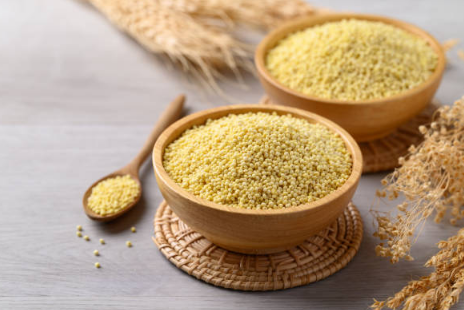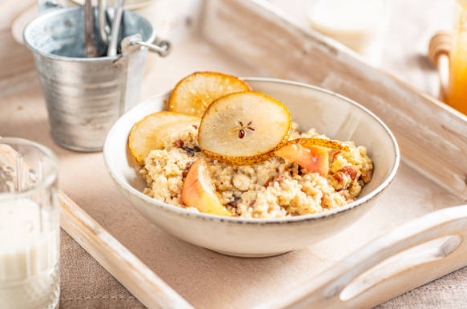Millet is an ancient grain that deserves a place in the modern kitchen. While often overshadowed by more popular grains like quinoa, oats, or barley, this corn-like seed is packed with nutrients—especially fiber.
Technically a seed, millet behaves much like a whole grain, making it a great swap if you’re tired of the usual brown rice or oatmeal routine. Here’s why millet is a smart and nutritious addition to your diet.
What Is Millet?
Millet is a cereal crop that belongs to the grass family. While it’s often used in birdseed mixes, it’s also a highly nutritious food for humans. In fact, millet is a staple food in many countries around the world.

Most millet found in U.S. grocery stores today is grown in India, China, and Niger, though it’s also cultivated in parts of the U.S., including North Dakota, South Dakota, Colorado, and Nebraska.
This naturally gluten-free grain looks a bit like corn kernels and has a mild, slightly sweet, corn-like flavor. Texture-wise, it’s fluffy like couscous and a bit denser than quinoa. Since it doesn’t have a strong flavor, millet is incredibly versatile and blends easily into a wide variety of recipes. Plus, it’s one of the more affordable whole grains available—great for budget-conscious meals.
Millet’s Nutritional Benefits
Like other whole grains, millet is rich in nutrients. One cup of cooked millet provides about 6 grams of protein and 2 grams of fiber. It’s also a good source of folate, B vitamins, and key minerals like magnesium, phosphorus, calcium, and iron.
Thanks to its combination of fiber and protein, millet supports digestive health. The insoluble fiber in millet acts as a prebiotic, helping feed the beneficial bacteria in your gut.
A review published in Frontiers in Nutrition found that eating millet is associated with higher hemoglobin levels. Hemoglobin is an iron-rich protein responsible for carrying oxygen throughout the body. Regular consumption of millet may help reduce iron deficiency anemia, which accounts for about 50% of anemia cases globally.
Millet also has a relatively low glycemic index compared to other grains. Past studies have even shown that it can help maintain healthy blood sugar levels.
And let’s not forget its environmental impact—millet is known for its low carbon footprint. It requires minimal water and thrives in hot, dry climates, making it a sustainable crop choice.
Millet vs. Quinoa
The main differences between millet and quinoa lie in their amino acid profiles and pH levels. Quinoa contains all nine essential amino acids, making it a complete protein, while millet needs to be paired with other grains or seeds—like chia or flax—to be considered complete.
When it comes to pH, quinoa is acidic, while millet is alkaline. This makes millet easier to digest for people with sensitive stomachs.
That said, the two grains share a lot in common. Both are naturally gluten-free and classified as whole grains. And both have prebiotic properties that support gut health.

How to Cook Millet
Now that we know why millet is a healthy addition to your diet, let’s talk about how to use it. Like quinoa or rice, millet is a versatile whole grain and makes a great, nutritious base for just about any meal.
Using Millet Flour
While millet flour doesn’t replace all-purpose flour one-for-one, it can be used to boost the fiber and protein content of baked goods. You can grind millet into a nutrient-dense, gluten-free flour perfect for breads, muffins, or other baked treats.
Millet Recipes
If you want to cook millet on its own, boiling is the way to go. The standard ratio is 2 cups of water for every 1 cup of millet. It will triple in volume as it cooks, becoming soft and fluffy.
Once cooked, you can toss millet into your favorite salads, soups, or stews—or serve it as a simple side dish (like a basic vegan millet pilaf). You can even try protein-packed millet burgers, perfect for grilling or pan-frying as a satisfying “Meatless Monday” dinner.
Millet is a humble but powerful grain that offers big health benefits, supports digestive wellness, is budget-friendly, and easy on the environment. It may not be the trendiest grain, but it just might be the most underrated one in your pantry.